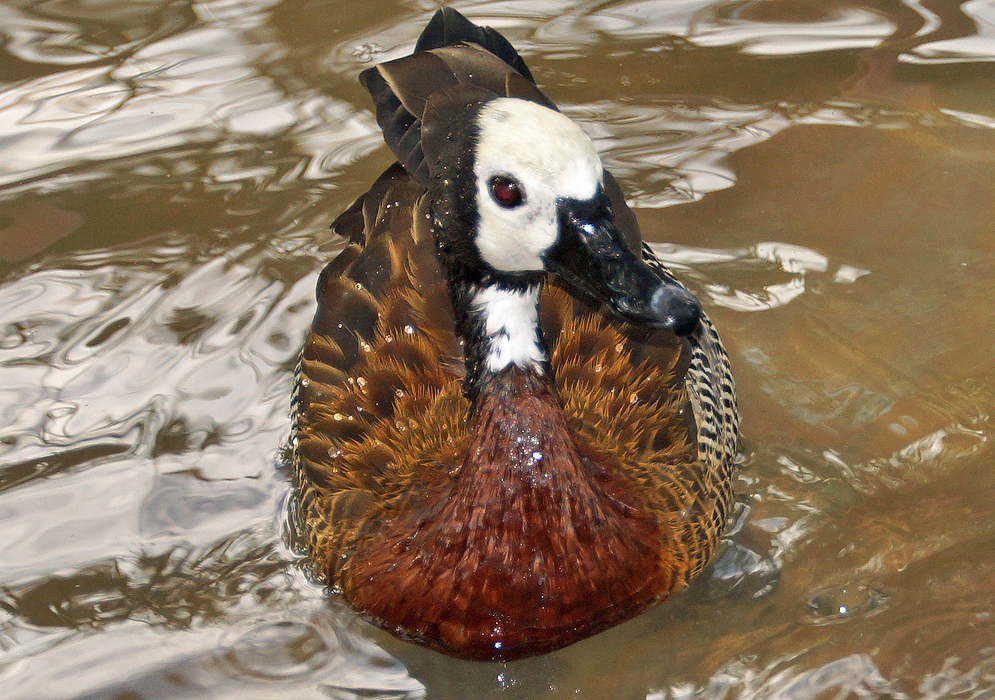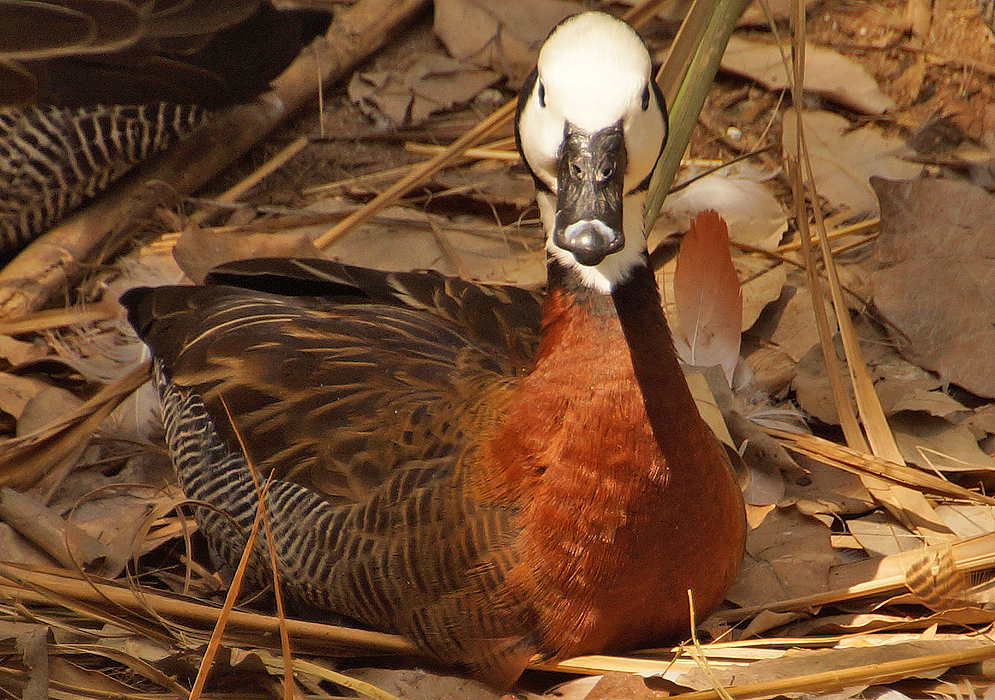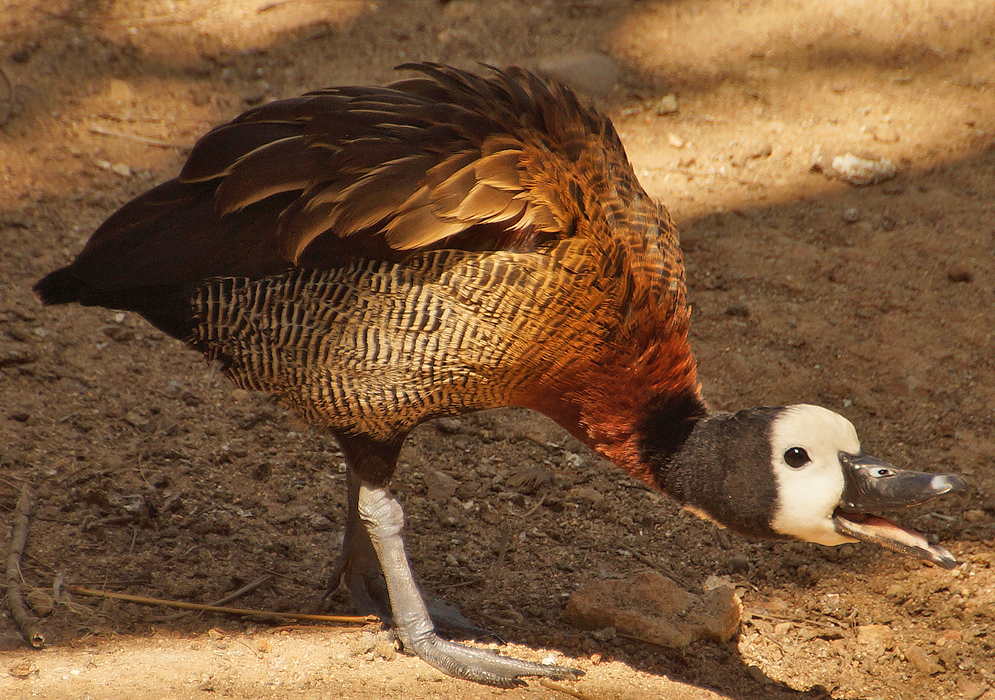This post has 11 Simple Fields-fields attached. Show fields.

The White-faced Whistling Duck is known for its clear three-note whistling call. This species exhibits a striking appearance with a long grey bill, a long head, longish legs, and a black neck and head. True to its name, it has a white face, although the extent of white coloration varies regionally. The back and wings are dark brown to black, while the underparts are black with white barring on the flanks, and the neck is chestnut. Both males and females share similar plumage, with juveniles resembling adults but having a less contrasted head pattern. This bird is native to sub-Saharan Africa and much of South America. It is suggested that they may have been transported to new locations worldwide by humans. Their preferred habitat includes freshwater lakes or reservoirs with abundant vegetation, where they feed primarily on seeds and other plant foods. Remarkably social, this species can form flocks of a thousand or more. The White-faced Whistling Duck is known to nest on stick platforms near the ground, laying 8-12 eggs, and occasionally using trees for nesting. The White-faced Whistling Duck is classified as "Least Concern" and largely resident. The species is also noted for its urban presence, often found in freshwater marshes, lakes, and rice fields in these areas.





